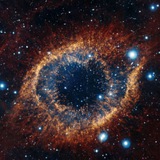Astronomy/Astrophysics
19 Apr 2025 13:53
Astrophotographer and hobby astronomer, but without having studied or working in the field.
Читать полностью…
Astronomy/Astrophysics
18 Apr 2025 18:53
Astrophysical Journal in the news
Astronomers confirm the existence of a lone black hole
A team of astronomers at the Space Telescope Science Institute, working with one colleague from the University of St Andrews' Center for Exoplanet Science and another from the European Southern Observatory, has confirmed the existence of a lone black hole. In their paper published in The Astrophysical Journal, the group describes how they studied newer data regarding an object they had spotted several years ago to confirm its identity.
Читать полностью…
Astronomy/Astrophysics
13 Apr 2025 19:56
You are measuring the duration of 9,192,631,770 periods of the radiation corresponding to the transition between two hyperfine levels of the ground state of the cesium-133 atom
Читать полностью…
Astronomy/Astrophysics
13 Apr 2025 15:33
it was at 250mm, f6.3 at 800 iso
Читать полностью…
Astronomy/Astrophysics
13 Apr 2025 09:59
Messier 42
Great nebula in orion
The Orion nebula, located approximately 1344 light years away in the orions sword, is one of the brightest nebulae visible in the night sky.
It is the closest region of massive star formation to Earth. It is estimated to be 24 light years across and has the mass of 2000 suns.
It is a very dusty region of space with lots of gas and new born stars.
Around 4 hours of data from bortle 4
Equipment:
Nikon Z50
Nikkor 50-250mm f4.5-6.3
Explore scientific iexos-100-2pmc tracking mount
Читать полностью…
Astronomy/Astrophysics
12 Apr 2025 19:28
Watch the pink moon live streamed: https://www.youtube.com/live/ECa71AoifHI?si=6mtqKORT4-8sauXI
Читать полностью…
Astronomy/Astrophysics
12 Apr 2025 16:52
but why is it showing 5:30 am to 6:30am
Читать полностью…
Astronomy/Astrophysics
12 Apr 2025 16:00
It's showing an error.
Читать полностью…
Astronomy/Astrophysics
12 Apr 2025 13:51
Let’s see what others say
Читать полностью…
Astronomy/Astrophysics
12 Apr 2025 13:33
Hey can we do meetings and disscus about astronomy and astrophysics
Читать полностью…
Astronomy/Astrophysics
12 Apr 2025 06:03
Quantum physics and astronomy
Читать полностью…
Astronomy/Astrophysics
12 Apr 2025 01:57
Not sure maybe smtg that interrelates the astronomy branches?
Читать полностью…
Astronomy/Astrophysics
12 Apr 2025 00:03
Light travels at the "speed of light" simply because it has no matter. Otherwise, it would have to have infinite energy. Therefore, "materializing" light should be impossible.
Читать полностью…
Astronomy/Astrophysics
11 Apr 2025 19:34
2025 April 11
The ISS Meets Venus
Image Credit & Copyright: A.J. Smadi
Made with a telescope shaded from bright sunlight by an umbrella, on April 5 a well-planned video captured a crescent Venus shining in clear daytime skies from Shoreline, Washington, USA at 11:57AM Pacific Time. It also caught the International Space Station in this single video frame. In close conjunction with the bright planet, the faint outline of the orbital outpost seen at a range of about 400 kilometers appears to be similar in size to the slender planetary crescent. Of course the ISS is much smaller than Venus. Now appearing as planet Earth's brilliant morning star and climbing above the eastern horizon in predawn skies, inner planet Venus was nearly 45 million kilometers from Shoreline.
Читать полностью…
Astronomy/Astrophysics
11 Apr 2025 18:19
basics of astrophysics
Читать полностью…

 3984
3984